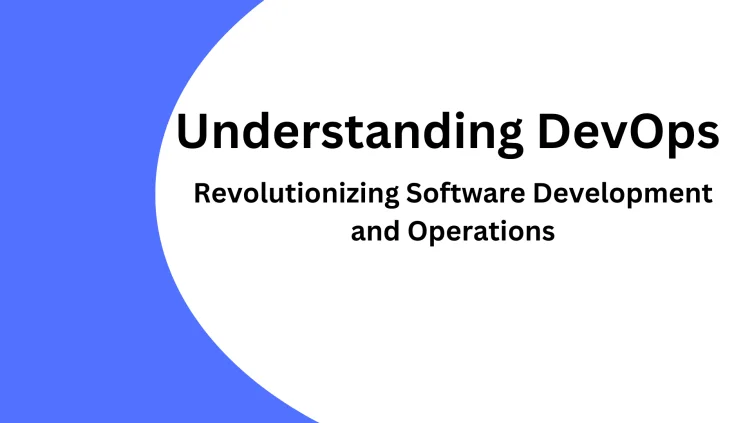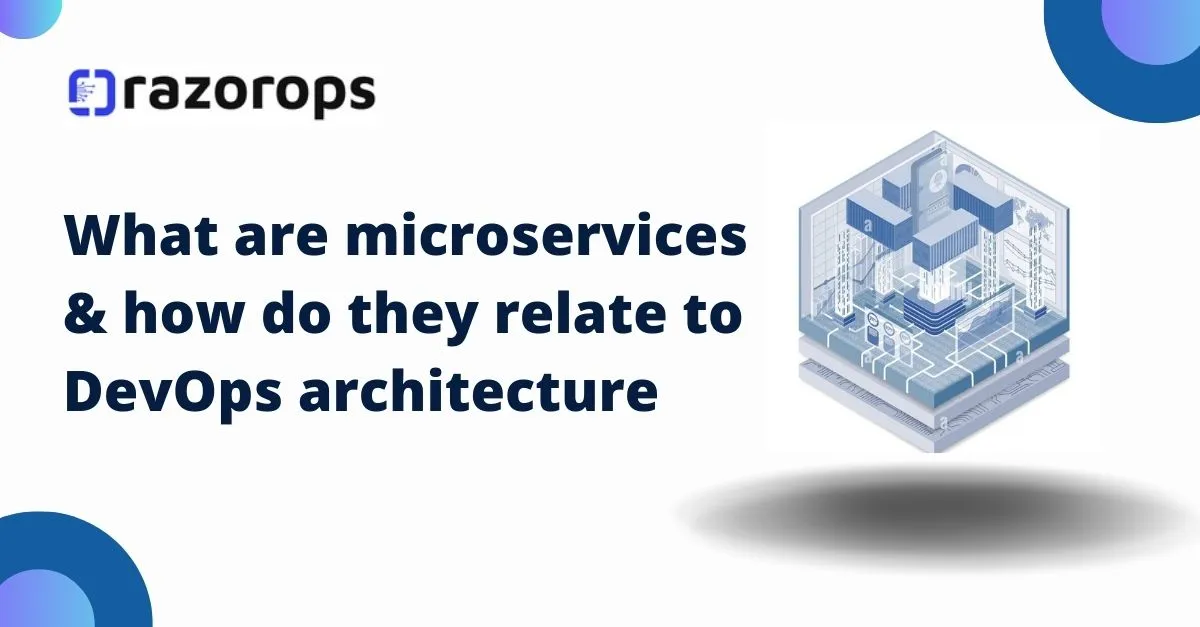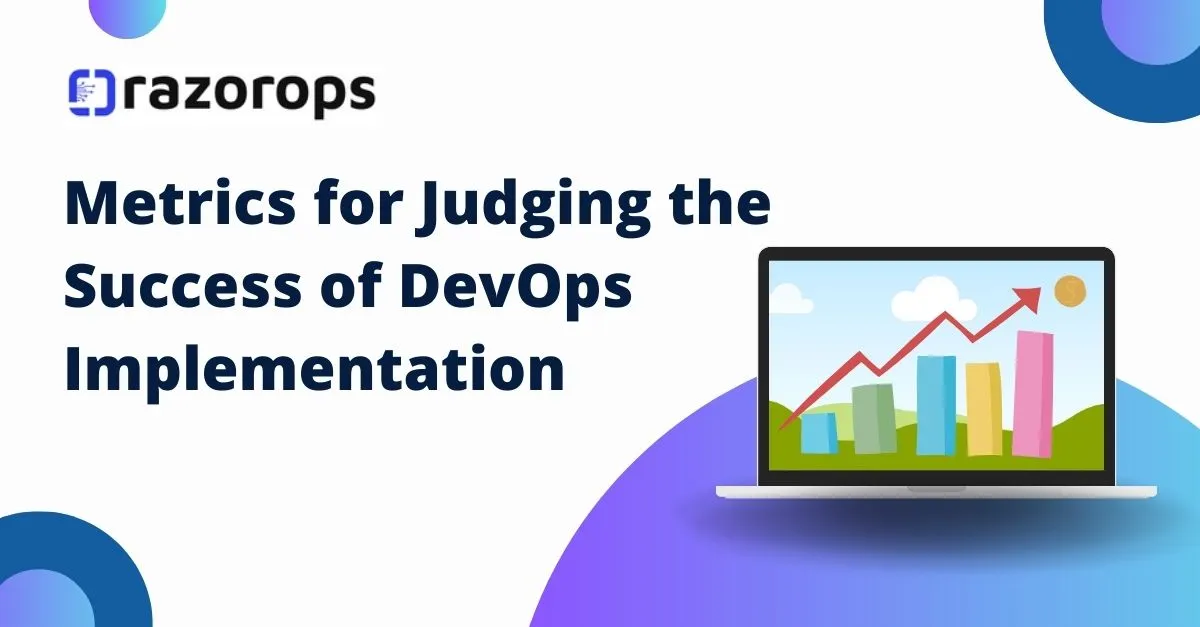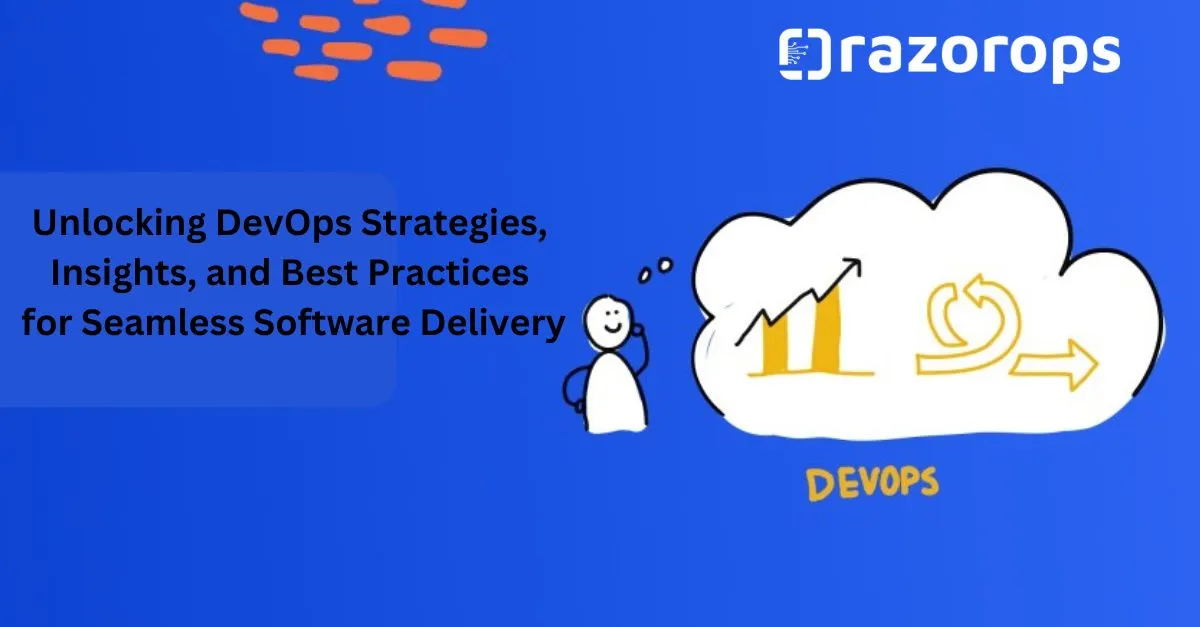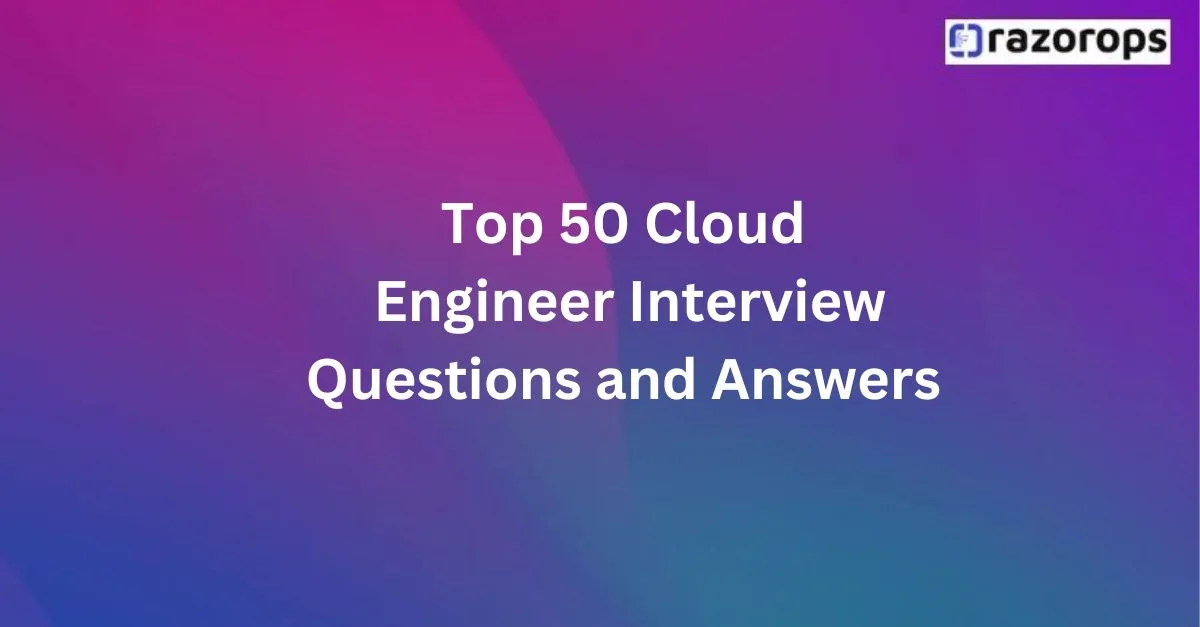Top 50 SRE Interview Question and Answers
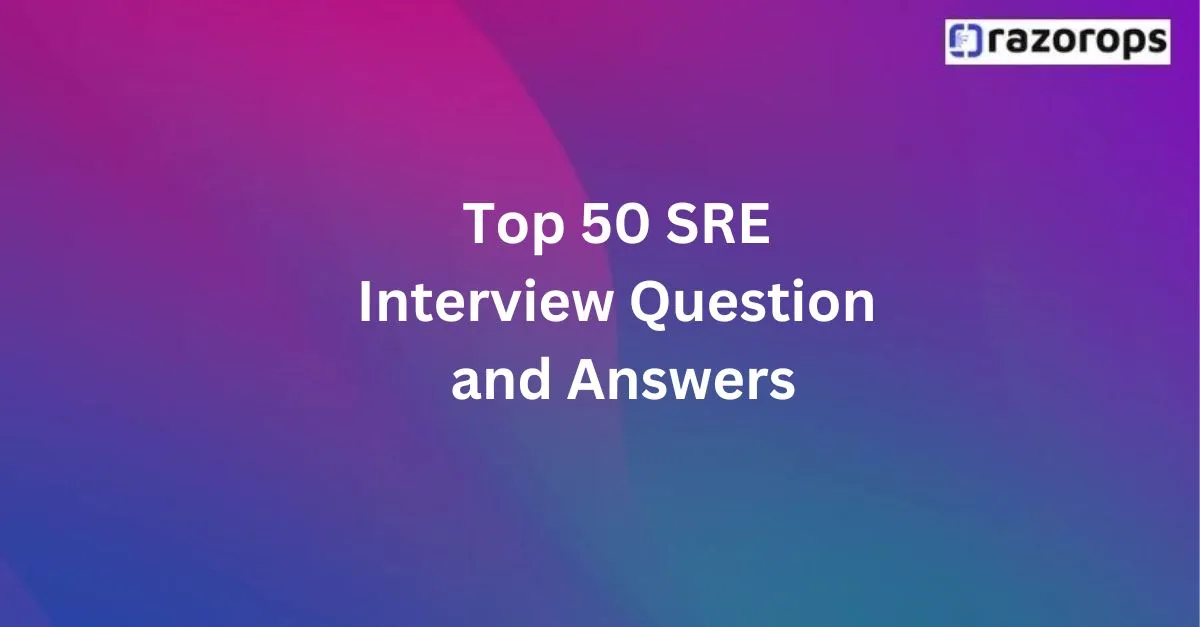
1. What is Site Reliability Engineering (SRE)?
Answer: SRE is a discipline that applies software engineering principles to infrastructure and operations problems. The goal is to create scalable and highly reliable software systems.
2. How does SRE differ from DevOps?
Answer: While both SRE and DevOps focus on improving collaboration and efficiency between development and operations, SRE is more focused on applying engineering practices to operations, often with a stronger emphasis on reliability and performance.
3. What are the key responsibilities of an SRE?
Answer: Key responsibilities include monitoring system performance, managing incidents, automating operational tasks, ensuring system reliability and availability, and improving infrastructure scalability.
4. Explain the concept of Service Level Objective (SLO).
Answer: SLO is a target level of reliability for a service, usually defined by a percentage (e.g., 99.9% uptime). It is part of the Service Level Agreement (SLA) and helps in measuring service performance against the agreed standards.
5. What is an Error Budget?
Answer: An error budget is the allowable amount of downtime or failures for a service within a specific time frame, balancing the need for reliability with the pace of innovation.
6. What is the role of monitoring in SRE?
Answer: Monitoring in SRE involves tracking system performance, identifying issues, and ensuring that the systems meet the defined SLOs. It helps in proactive incident detection and resolution.
7. What tools are commonly used in SRE for monitoring?
Answer: Common tools include Prometheus, Grafana, Nagios, Zabbix, Datadog, and New Relic.
8. Explain the difference between proactive and reactive monitoring.
Answer: Proactive monitoring aims to detect and address potential issues before they impact users, while reactive monitoring involves responding to incidents after they have occurred.
9. What is incident management in the context of SRE?
Answer: Incident management involves detecting, responding to, and resolving incidents to minimize the impact on services and ensure quick recovery and restoration.
10. Describe the concept of blameless postmortems.
Answer: Blameless postmortems focus on understanding the root cause of an incident without assigning blame. The goal is to learn from the incident and improve systems to prevent future occurrences.
11. What is a runbook?
Answer: A runbook is a detailed guide that outlines the steps required to perform specific operational tasks or handle incidents. It serves as a reference for engineers during troubleshooting.
12. How do you prioritize tasks and incidents in SRE?
Answer: Tasks and incidents are prioritized based on their impact on service reliability, user experience, and business objectives. Critical incidents affecting SLOs are usually prioritized higher.
13. What is Chaos Engineering?
Answer: Chaos Engineering involves deliberately introducing failures into a system to test its resilience and identify weaknesses before they cause real problems.
14. How do you implement SLOs and SLIs in a new service?
Answer: Implement SLOs by defining acceptable levels of reliability, then identify key metrics (SLIs) that reflect those levels. Monitor and refine these metrics based on real-world data.
15. Explain the concept of capacity planning in SRE.
Answer: Capacity planning involves predicting future resource needs and ensuring that the infrastructure can handle anticipated growth and load without compromising performance.
16. What is the significance of automation in SRE?
Answer: Automation helps in reducing manual tasks, minimizing human errors, increasing efficiency, and ensuring consistent performance across the infrastructure.
17. How do you handle on-call rotations in SRE?
Answer: On-call rotations are managed by scheduling engineers to be available for incident response, ensuring proper documentation, and providing necessary training to handle incidents effectively.
18. What strategies do you use to reduce downtime during deployments?
Answer: Strategies include blue-green deployments, canary releases, feature toggles, and automated rollback mechanisms.
19. What is the purpose of a Service Level Agreement (SLA)?
Answer: An SLA is a formal agreement between a service provider and a customer that defines the expected level of service, including uptime, performance, and response times.
20. How do you measure and improve system reliability?
Answer: System reliability is measured using metrics like uptime, response time, and error rates. Continuous improvement involves analyzing incidents, implementing fixes, and refining monitoring and automation.
21. What is the role of version control in SRE?
Answer: Version control helps in tracking changes to code and configurations, enabling easier rollback, collaboration, and auditability.
22. Explain the concept of infrastructure as code (IaC).
Answer: IaC is the practice of managing and provisioning infrastructure using machine-readable configuration files, ensuring consistency, and enabling automation.
23. What is a microservices architecture?
Answer: Microservices architecture involves breaking down a monolithic application into smaller, independently deployable services, each responsible for a specific functionality.
24. How do you ensure security in SRE?
Answer: Security is ensured through regular vulnerability assessments, implementing best practices like least privilege access, encryption, and monitoring for suspicious activities.
25. What is a playbook in the context of SRE?
Answer: A playbook is a collection of standardized procedures and protocols that guide engineers in handling various operational tasks and incidents.
26. How do you manage configuration drift?
Answer: Configuration drift is managed through automation, regular audits, and using IaC to ensure consistent configurations across environments.
27. What is a service mesh?
Answer: A service mesh is a dedicated infrastructure layer that manages service-to-service communication, providing features like load balancing, service discovery, and security.
28. How do you handle disaster recovery in SRE?
Answer: Disaster recovery involves creating and maintaining a plan that includes data backups, redundancy, failover mechanisms, and regular testing to ensure business continuity.
29. What is a container orchestration system?
Answer: A container orchestration system, like Kubernetes, automates the deployment, scaling, and management of containerized applications.
30. How do you ensure high availability in your systems?
Answer: High availability is ensured through redundancy, failover mechanisms, load balancing, and designing systems to avoid single points of failure.
31. What are SLIs and how are they different from SLOs?
Answer: SLIs (Service Level Indicators) are specific metrics used to measure service performance (e.g., response time, error rate). SLOs (Service Level Objectives) are the target values for those metrics.
32. Explain blue-green deployment.
Answer: Blue-green deployment is a strategy where two identical environments (blue and green) are maintained. The new version is deployed to the green environment while the blue environment continues to serve users. Traffic is then switched to the green environment.
33. What is a canary release?
Answer: A canary release involves deploying a new version of a service to a small subset of users to test its performance before rolling it out to the entire user base.
34. How do you handle logging and log management?
Answer: Logging involves capturing and storing logs from various services, while log management includes aggregating, analyzing, and maintaining logs for troubleshooting and monitoring purposes.
35. What is the purpose of a load balancer?
Answer: A load balancer distributes incoming traffic across multiple servers to ensure no single server becomes a bottleneck, improving availability and reliability.
36. Explain the concept of observability in SRE.
Answer: Observability is the ability to measure the internal state of a system based on its outputs (logs, metrics, traces). It helps in understanding system behavior and diagnosing issues.
37. What are some common challenges faced by SREs?
Answer: Common challenges include managing complex systems, balancing reliability with innovation, incident response, scaling infrastructure, and maintaining automation.
38. How do you perform capacity planning?
Answer: Capacity planning involves analyzing current usage patterns, forecasting future needs, and ensuring that infrastructure can handle anticipated growth.
39. What is a hybrid cloud?
Answer: A hybrid cloud combines on-premises infrastructure with public cloud services, allowing data and applications to be shared between them.
40. How do you implement zero downtime deployments?
Answer: Zero downtime deployments can be achieved through techniques like blue-green deployments, canary releases, rolling updates, and using feature toggles.
41. What is a failover system?
Answer: A failover system automatically switches to a backup system or component when the primary one fails, ensuring continuous availability.
42. How do you handle data backup and recovery?
Answer: Data backup involves regularly saving copies of data, while recovery involves restoring data from backups in case of loss or corruption. Regular testing of backup and recovery processes is essential.
43. What is the importance of redundancy in SRE?
Answer: Redundancy ensures that there are multiple instances of critical components, reducing the risk of a single
44. What is the role of an SRE in incident response?
Answer: An SRE’s role in incident response includes detecting and diagnosing issues, coordinating the response, mitigating impact, and conducting post-incident analysis to prevent future occurrences.
45. Explain the concept of ‘defense in depth’ in security.
Answer: ‘Defense in depth’ is a layered security approach where multiple security measures are implemented to protect data and systems. If one layer fails, others still provide protection.
46. What is a root cause analysis (RCA)?
Answer: RCA is a systematic process used to identify the underlying cause of an incident or problem, aiming to prevent recurrence by addressing the root issues rather than just symptoms.
47. How do you use metrics and monitoring data to improve system reliability?
Answer: Metrics and monitoring data are analyzed to identify trends, detect anomalies, and measure the impact of changes. This information helps in making data-driven decisions to improve system reliability.
48. What is a distributed tracing system?
Answer: A distributed tracing system tracks requests as they flow through different services in a microservices architecture, helping in pinpointing latency issues and understanding system behavior.
49. How do you manage changes in production systems?
Answer: Changes in production systems are managed through version control, automated testing, staged rollouts, monitoring, and having rollback plans in place to quickly revert changes if issues arise.
50. What are some best practices for incident documentation?
Answer: Best practices for incident documentation include detailed logging of incident timelines, steps taken to mitigate the issue, root cause analysis, impact assessment, and lessons learned. Documentation should be clear, concise, and accessible to all relevant team members.
-
Understand the Fundamentals: Be well-versed in the core concepts of SRE, including reliability, scalability, automation, and incident management.
-
Experience with Tools: Be familiar with popular SRE tools and platforms like Kubernetes, Docker, Prometheus, Grafana, Terraform, and Ansible.
-
Practical Scenarios: Be prepared to discuss real-world scenarios where you applied SRE principles, solved critical incidents, or improved system reliability.
-
Soft Skills: Emphasize your ability to communicate effectively, work under pressure, and collaborate with cross-functional teams.
-
Continuous Learning: Demonstrate your commitment to staying updated with the latest trends and technologies in the SRE and DevOps fields.
51. What are SLAs, and how do they differ from SLOs and SLIs?
Answer: SLA (Service Level Agreement) is a contract that defines the level of service expected from a service provider, including uptime, performance, and response times. SLO (Service Level Objective) is a specific target within an SLA that a service must meet, like 99.9% uptime. SLI (Service Level Indicator) is a metric used to measure the performance of a service against an SLO, such as response time or error rate.
52. How do you handle noisy neighbors in a multi-tenant environment?
Answer: Noisy neighbors are managed through resource isolation techniques such as setting resource limits (CPU, memory), using cgroups, implementing quality of service (QoS) policies, and monitoring resource usage to detect and mitigate the impact on other tenants.
53. What is autoscaling, and how does it benefit reliability?
Answer: Autoscaling automatically adjusts the number of running instances based on current demand. This ensures that resources are available to handle increased loads, improving reliability and performance during peak times while reducing costs during low demand periods.
54. Explain the concept of load shedding.
Answer: Load shedding involves intentionally dropping or refusing to process some requests when a system is overloaded to protect its core functionality and prevent complete failure. This can be done by prioritizing critical requests and shedding less critical load.
55. What is a circuit breaker pattern, and why is it used?
Answer: The circuit breaker pattern is a design pattern used to detect failures and prevent cascading failures in distributed systems. It temporarily blocks requests to a service when failures are detected, allowing the service to recover before resuming normal operations.
56. How do you perform a fault injection test?
Answer: Fault injection involves deliberately introducing errors or faults into a system to test its resilience and ability to recover. This can be done using tools like Chaos Monkey, Gremlin, or by simulating network failures, server crashes, or high latency conditions.
57. What is a shadow deployment?
Answer: A shadow deployment involves deploying a new version of a service alongside the current version and mirroring the live traffic to it without affecting the production traffic. This helps in validating the new version under real-world conditions without impacting users.
58. Describe the concept of throttling in SRE.
Answer: Throttling limits the number of requests a service can handle to prevent overload and ensure fair resource allocation. It helps maintain system stability during high traffic periods by controlling the rate of incoming requests.
59. What is the role of a runbook in incident management?
Answer: A runbook provides detailed instructions for handling specific incidents or operational tasks. It helps engineers quickly respond to and resolve issues by following predefined steps, ensuring consistency and reducing the mean time to recovery (MTTR).
60. How do you implement blue-green deployments in Kubernetes?
Answer: Blue-green deployments in Kubernetes can be implemented by creating two separate environments (blue and green) using deployments and services. Traffic is routed to the blue environment while the green environment is updated. Once validated, traffic is switched to the green environment, and the blue environment is kept as a fallback.
61. What are some key metrics for measuring the performance of a microservices architecture?
Answer: Key metrics include latency, throughput, error rates, request rates, and resource utilization (CPU, memory). These metrics help in understanding the performance and health of individual services and the overall system.
62. Explain the concept of graceful degradation.
Answer: Graceful degradation is a strategy where a system continues to operate with reduced functionality in the event of partial failures. This ensures that critical services remain available, even if some features are temporarily disabled or limited.
63. How do you manage secrets in a cloud-native environment?
Answer: Secrets are managed using tools like Kubernetes Secrets, HashiCorp Vault, AWS Secrets Manager, or Azure Key Vault. These tools securely store and manage sensitive information like API keys, passwords, and certificates, providing controlled access and auditability.
64. What is the difference between active-active and active-passive failover?
Answer: Active-active failover involves multiple systems actively serving traffic, providing higher availability and load balancing. Active-passive failover has a primary active system with a standby passive system that takes over only if the primary fails, providing a backup.
65. What is a playbook, and how is it used in SRE?
Answer: A playbook is a comprehensive set of procedures and protocols for handling specific operational tasks and incidents. It provides detailed steps for troubleshooting, incident resolution, and routine maintenance, ensuring consistency and efficiency.
66. How do you handle stateful applications in a containerized environment?
Answer: Stateful applications in a containerized environment are managed using StatefulSets in Kubernetes, which provide stable network identities, persistent storage, and ordered deployment and scaling for stateful applications.
67. What is the role of configuration management in SRE?
Answer: Configuration management ensures that systems are configured consistently and correctly. It involves maintaining and versioning configuration files, automating configuration changes, and using tools like Ansible, Puppet, or Chef to manage configurations across environments.
68. Explain the concept of eventual consistency.
Answer: Eventual consistency is a consistency model in distributed systems where, given enough time, all copies of data will become consistent. It is often used in systems where high availability and partition tolerance are prioritized over immediate consistency.
69. How do you ensure compliance with regulatory requirements in SRE?
Answer: Compliance is ensured by implementing security controls, maintaining audit logs, conducting regular security assessments, and following best practices for data protection and privacy. Compliance tools and frameworks help automate and enforce these requirements.
70. What is a rollback strategy, and how do you implement it?
Answer: A rollback strategy involves reverting to a previous stable version of a service in case of issues with the current deployment. This can be implemented using version control, maintaining previous versions of deployments, and automating rollback processes in CI/CD pipelines.
71. What is the significance of load testing in SRE?
Answer: Load testing involves simulating high traffic conditions to evaluate system performance and identify bottlenecks. It helps ensure that the system can handle expected and peak loads, providing insights into scalability and reliability.
72. How do you manage dependencies in a microservices architecture?
Answer: Dependencies in microservices are managed using service discovery, API gateways, and dependency management tools. Monitoring and logging dependencies, versioning APIs, and implementing retries and circuit breakers also help manage dependencies effectively.
73. What is a synthetic transaction, and how is it used in monitoring?
Answer: A synthetic transaction is a scripted sequence of interactions with a service that mimics real user behavior. It is used in monitoring to proactively check the availability and performance of services by simulating user actions.
74. Explain the concept of a service registry.
Answer: A service registry is a dynamic database of service instances and their locations, used for service discovery in a microservices architecture. It helps services find and communicate with each other by maintaining an updated list of available services.
75. How do you handle schema migrations in a distributed database?
Answer: Schema migrations in a distributed database are handled using migration tools (like Flyway or Liquibase), versioning schemas, implementing backward-compatible changes, and coordinating deployments to ensure data consistency and minimal downtime.
76. What is the purpose of an alerting system in SRE?
Answer: An alerting system notifies engineers of issues in real-time, enabling quick response to incidents. It is configured to trigger alerts based on predefined thresholds for critical metrics, helping in proactive monitoring and incident management.
77. What is the difference between horizontal and vertical scaling?
Answer: Horizontal scaling involves adding more instances to distribute the load, while vertical scaling involves adding more resources (CPU, memory) to existing instances. Horizontal scaling provides better fault tolerance and load distribution, while vertical scaling can be limited by hardware constraints.
78. How do you ensure data integrity in distributed systems?
Answer: Data integrity in distributed systems is ensured through techniques like transaction management, data replication, consistency checks, and using consensus algorithms (e.g., Raft, Paxos) to maintain consistency across nodes.
79. What is the significance of a distributed cache?
Answer: A distributed cache improves system performance and scalability by storing frequently accessed data in memory across multiple nodes. This reduces database load, decreases latency, and speeds up data retrieval.
80. How do you manage security patches in a large-scale environment?
Answer: Security patches are managed through automated patch management tools, regular patch cycles, vulnerability assessments, and ensuring minimal disruption by scheduling updates during maintenance windows or using rolling updates.
81. What is a rollback window?
Answer: A rollback window is a predetermined time frame during which a new deployment can be rolled back to the previous version if issues are detected. It ensures quick recovery from deployment failures and minimizes the impact on users.
82. How do you handle network partitioning in a distributed system?
Answer: Network partitioning is handled by designing systems to be partition-tolerant, implementing strategies like eventual consistency,



